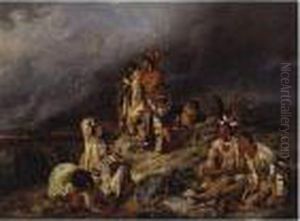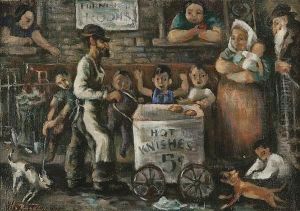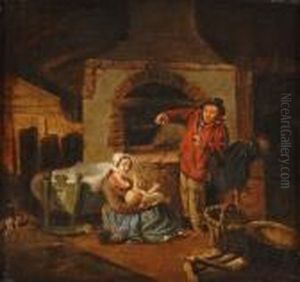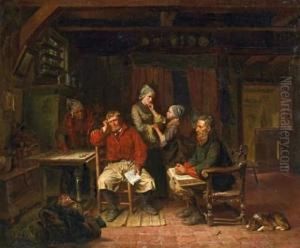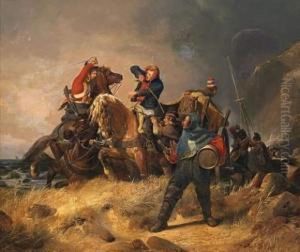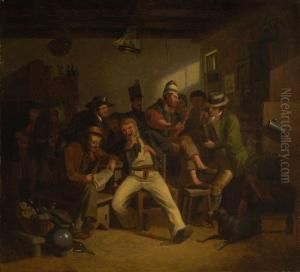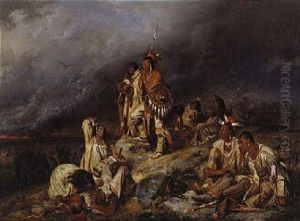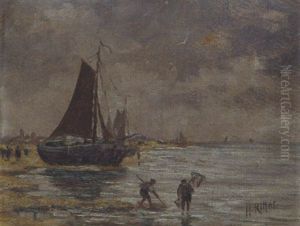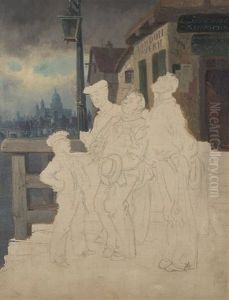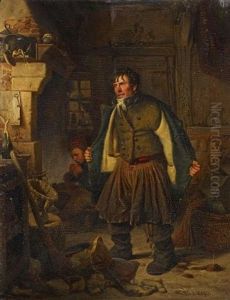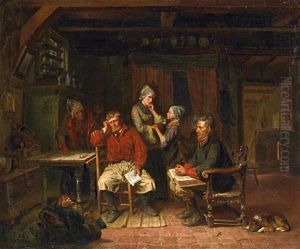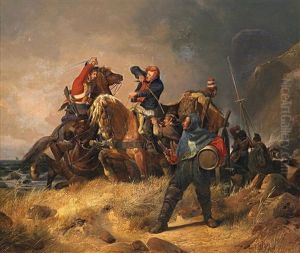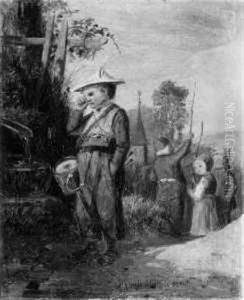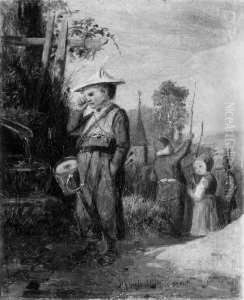Henry Ritter Paintings
Henry Ritter was a German painter and illustrator, born in 1816 in Lüneburg, Lower Saxony. His work is often characterized by its detailed realism and historical themes. Ritter's artistic journey began at an early age, showing a profound talent and passion for drawing and painting. He pursued his education in the arts at the Academy of Fine Arts in Düsseldorf, which was a leading institution for art education in Germany at the time. The Düsseldorf School of Painting, with which he became associated, was known for its emphasis on historical and landscape painting, elements that would deeply influence Ritter's career.
Ritter's body of work includes a variety of subjects, but he is particularly remembered for his historical paintings. His ability to capture the essence of historical events and figures with accuracy and emotional depth set him apart from his contemporaries. One of his most celebrated works is the painting of the Prussian King Frederick II, known as Frederick the Great, which showcases Ritter's skill in portraiture and his nuanced understanding of historical context.
Despite his success as an artist, Henry Ritter's life was marked by personal struggles, including financial difficulties and health issues. These challenges, however, did not deter him from his artistic pursuits. He continued to work and contribute to the art world until his untimely death in 1853 at the age of 37.
Ritter's legacy is that of a talented painter who managed to capture the spirit of his time through his historical paintings and illustrations. Although his life was short, his work left a lasting impact on the German art scene of the 19th century. Today, Henry Ritter is remembered as a significant figure in the Düsseldorf School of Painting, and his works are appreciated for their historical value and artistic merit.
